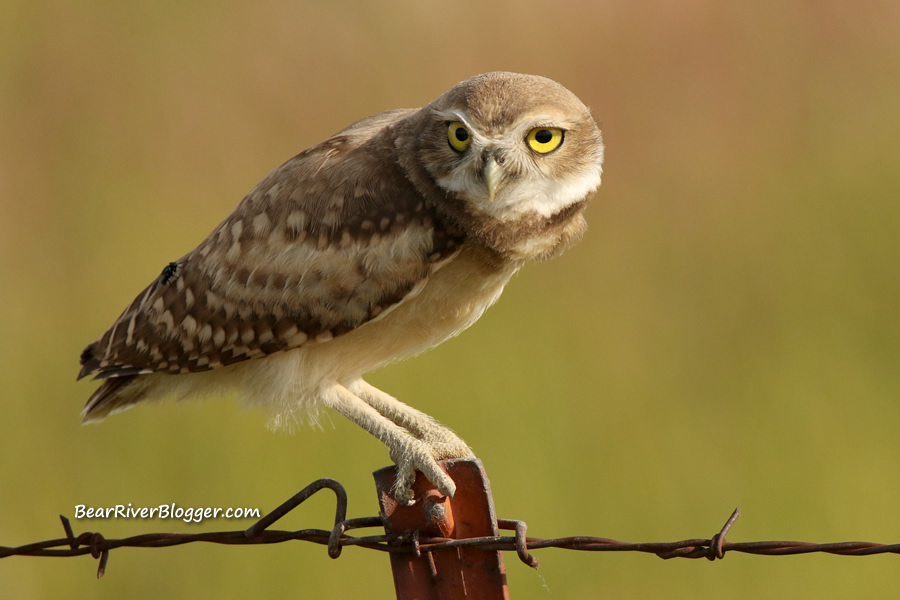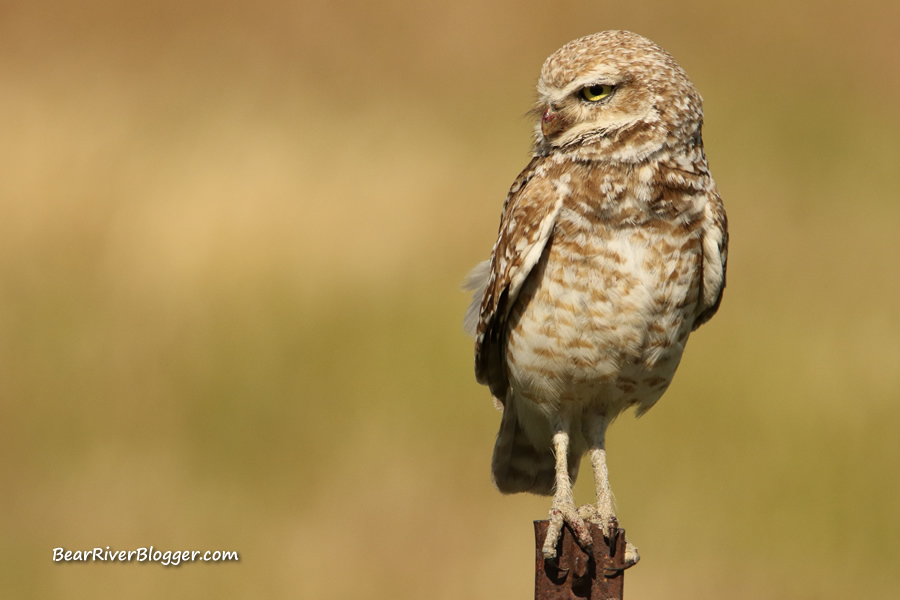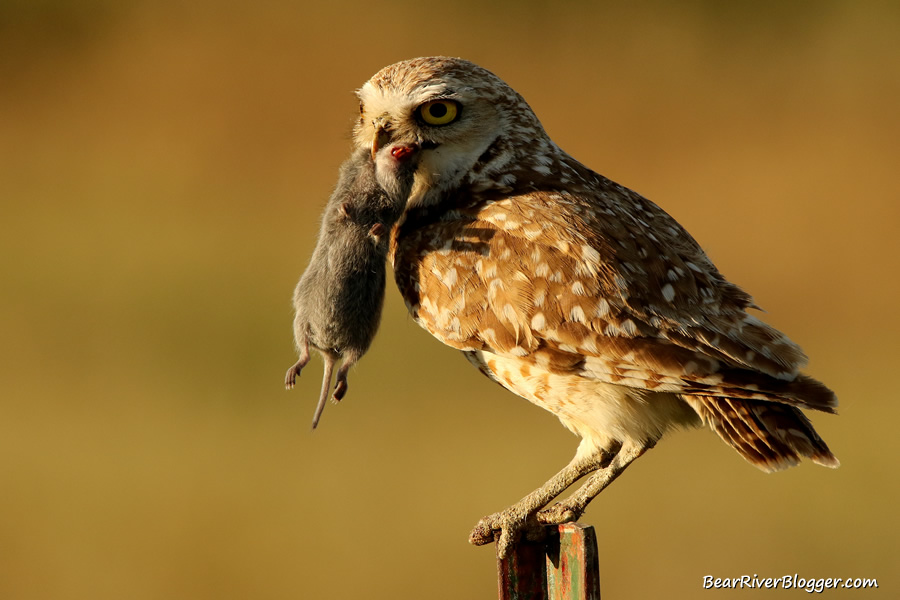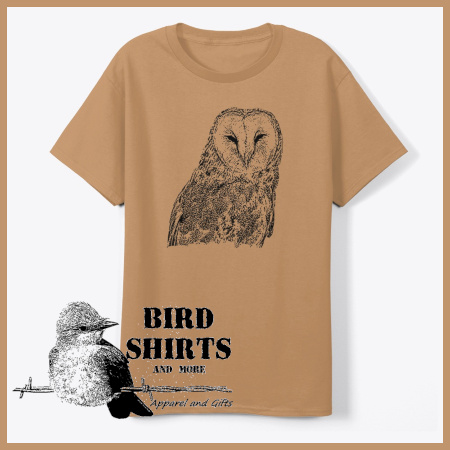One of the things I rather enjoy pertaining to blogging is the unique opportunities I get to meet fellow bird watchers while out in nature.
Often during these brief but not uncommon encounters, I am asked where and when can someone find a particular bird. This is especially commonplace when I am photographing on the Bear River Migratory Bird Refuge auto tour route.
One of those bird species that seems to come up regularly in these discussions is the burrowing owl.
With regards to the refuge, if you look at the Bear River Migratory Bird Refuge bird list, the burrowing owl is listed as a summer bird species, one that is even known to nest on the refuge but, unfortunately, not commonly seen there.
Well, in all honesty, that might be quite an understatement, if truth be told.
From my own personal experience, I have only ever seen two burrowing owls on the Bear River Bird Refuge, with the most recent being about 5 years ago.
The first two photographs below are, in fact, the only burrowing owls I have personally witnessed on the refuge over my many years of very frequent visitations.
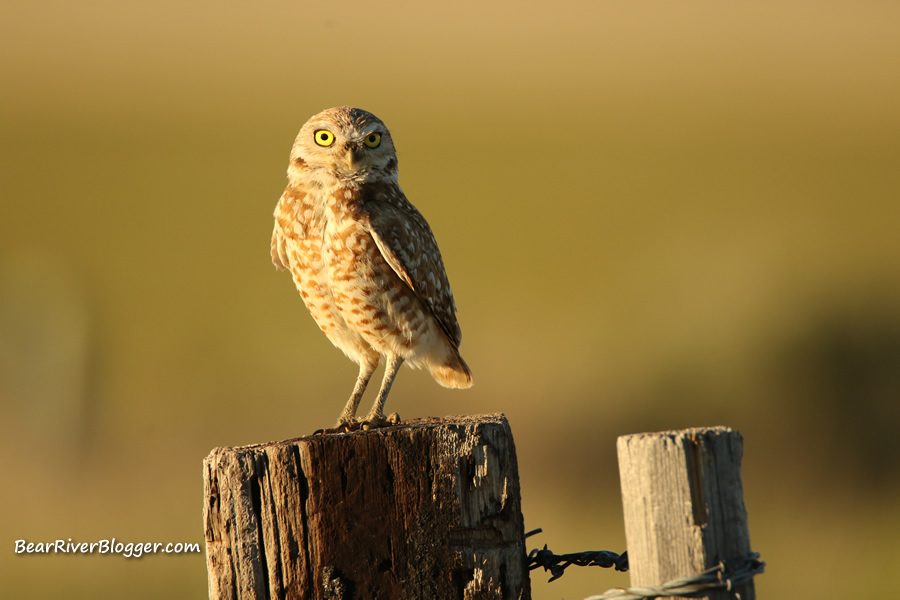
But don’t let this discourage you, however, from seeking out burrowing owls to watch and photograph, on or even off of the refuge, for that matter.
Burrowing owls aren’t rare but are actually common in Utah in certain areas along the Wasatch Front. And they are not extremely difficult to find if one knows where to look, but more about where to find these quirky little owls in a minute.
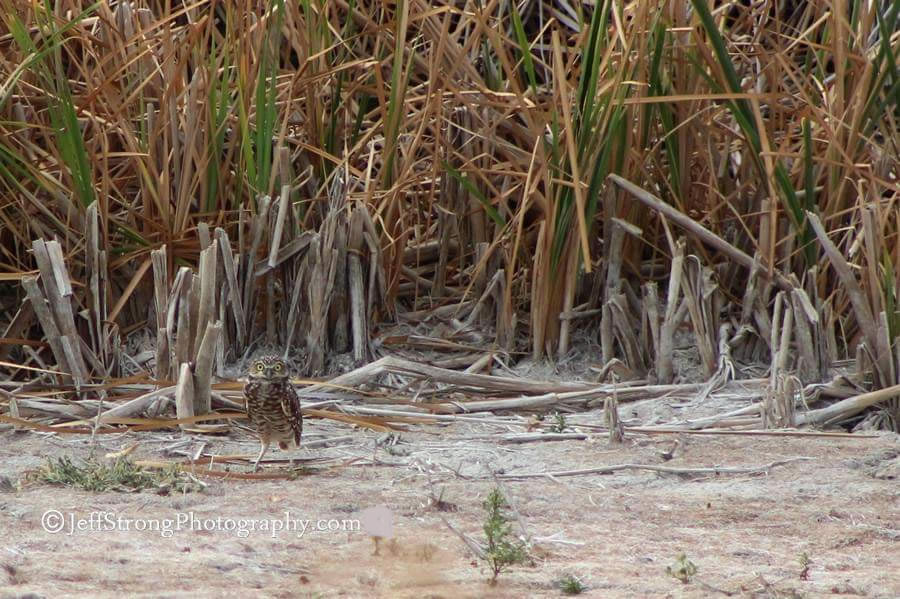
Burrowing Owl Habitat
First and foremost, in order to find burrowing owls, you must know a little bit about them and where they prefer to live.
Burrowing owls are found in the western half of the United States, starting in North Dakota down to western Texas and all the way to the California coast, with a population also living on the Florida panhandle.
The burrowing owl lives in upland areas such as open grasslands, prairies, and near farms and fields where the vegetation is often quite low, making it easier to for them to hunt mice and voles.
During the breeding season, burrowing owls use underground burrows to nest. Quite often, these caverns were previously made by badgers, skunks, and other animals and left abandoned, eventually being taken over by the tenacious little burrowing owl.
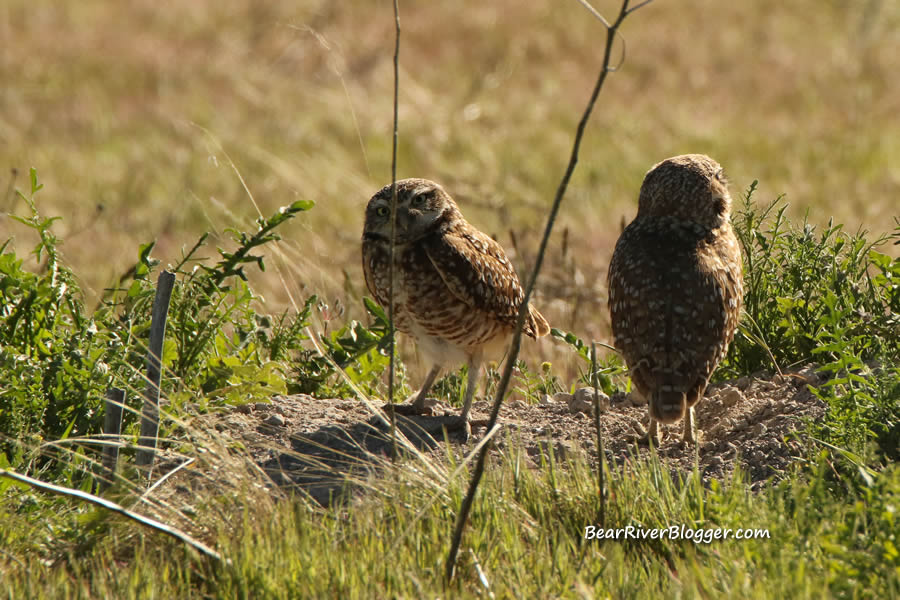
Burrowing Owl Traits
Burrowing owls are great flyers, and can hover in place for several minutes or more, with or without a headwind, in search of rodents or insects on the ground below.
Some burrowing owls migrate northward each spring to more northerly breeding grounds, even as far north as the Canada border, while other burrowing owls stay put year-round in the southwestern portion of the United States, including parts of Arizona, New Mexico, Texas, California, and Florida.
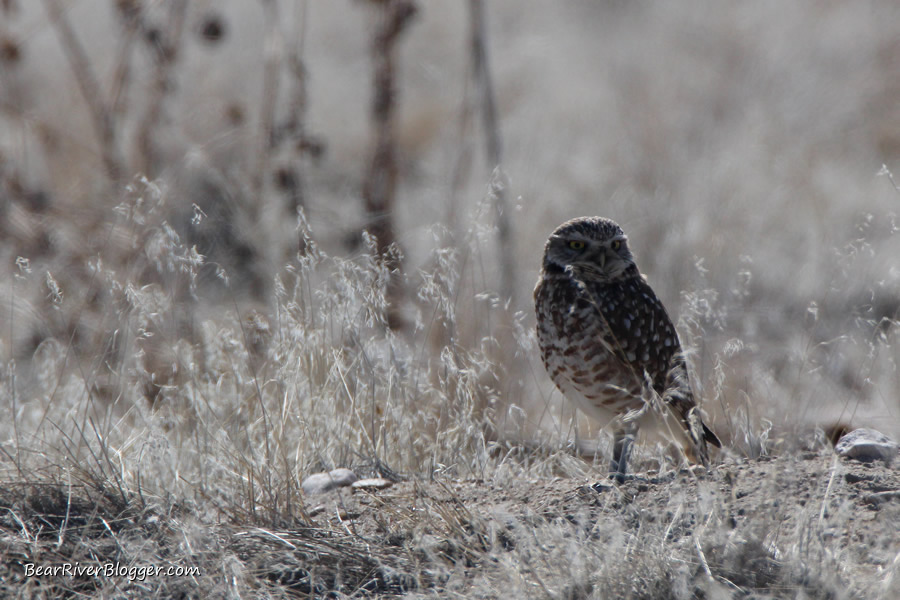
Here in Utah, the burrowing owl is a migratory bird, arriving during early spring and summer, with individual owls oftentimes showing up during the month of March in some areas.
In fact, I saw my first Utah burrowing owl last week, possibly making this first-week-of-March sighting the earliest one ever for me with regards to the burrowing owl.
Burrowing owls eat rodents, small birds, and mammals, such as mice and voles, as well as grasshoppers, beetles, crickets, caterpillars, and other local types of insects.
The burrowing owl hunts at dusk and during the night, but it will also do a lot of hunting during daylight hours during the breeding season. Burrowing owls can hunt from a perch while hovering in place over a field, or by running down prey on the ground.
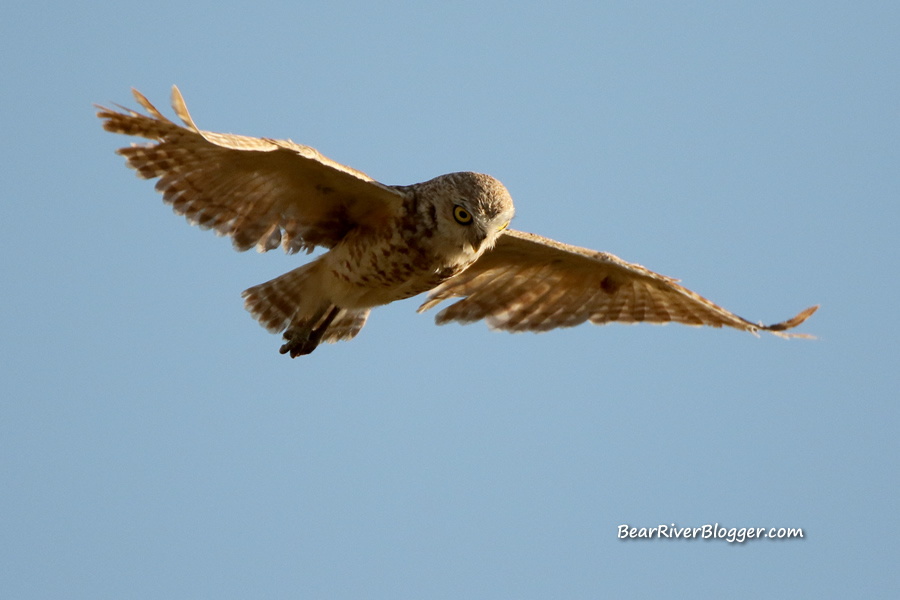
Like most owls, burrowing owls don’t drink much, if any, water on their own but rather get the moisture they need from the blood and tissue from their prey when they eat.
Burrowing Owls On The Bear River Migratory Bird Refuge
Now, if you stop and think about it, the Bear River Migratory Bird Refuge is mainly a wetland sanctuary with a lot of marsh habitat that is thick and oftentimes underwater.
Not a very suitable environment for the burrowing owl, I must admit, which is why they aren’t commonly seen on a good portion of the bird refuge.
In fact, the second photo posted above was taken on the far north-western portion of the refuge auto tour route and it was during an extremely dry year, as you can probably tell by the photo.
Typically, this spot is usually underwater, and as such, I found it to be an odd place for a burrowing owl to be standing.
There are parts of the refuge along Forest street, however, which are more of an upland-type habitat and better suited for burrowing owls. The first photo posted above was taken on the refuge on Forest street just a couple miles or so west of the refuge visitors center.
This area is more of an upland-based habitat. And, from what I have been told by refuge personnel, it has been more of a historical spot for burrowing owls until the Great Salt Lake flooded the refuge in the early 1980s and destroyed this grassland plains.
The grass and upland cover is making a gradual comeback, but the owls are very slow to return for some reason. I have hope they will indeed return to the refuge and someday once again be a staple bird on this section of the preserve.
Thankfully, burrowing owls are common in other parts of Box Elder County, so it only makes sense they will eventually return to the refuge, an area they once frequented before the devastating floods from the harsh winter we had back then.
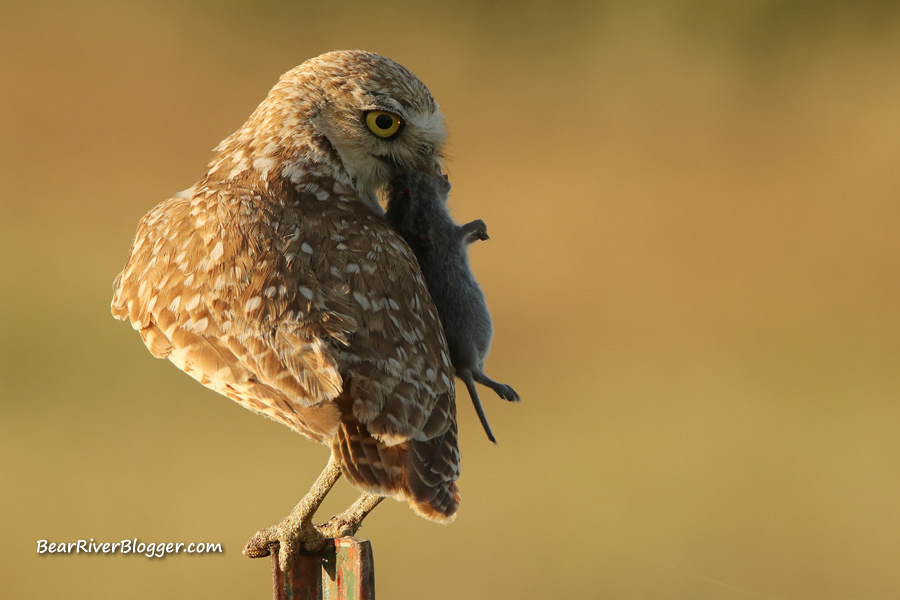
Finding Burrowing Owls
One of the best parts of bird watching is actually finding new spots to observe a favorite bird. This is especially true with burrowing owls for me.
During the past few years, I have spent a little time each summer in search of burrowing owls, and this endeavor has taken me to some very remote parts of Box Elder County, Utah, but these efforts have indeed given me some great burrowing owl viewing and photography opportunities.
To find areas with burrowing owls, I first start in agricultural areas, particularly in places with livestock grazing so the vegetation is short.
Most of the places I have found burrowing owls in Box Elder County are remote grasslands supporting sheep or cattle with fencing along the road. The owls love to perch on the fence posts so they can scan the ground below for mice, large bugs, and grasshoppers.

I have put on a lot of miles in search of burrowing owls, and I am certain I will put on a lot more before my thirst to photograph them is totally quenched.
For some reason, burrowing owls seem to get a bit more active for the hunt when it cools down and the sun starts to get a bit lower. I have looked for them earlier in the day but with very little success, so I rarely search for burrowing owls before the last 2 hours of the day.
I slowly drive around on many remote thoroughfares, looking at the fence posts up and down each road, hoping to find a burrowing owl casually perched on a fence post.
Once I find a burrowing owl, I know there are usually a few more around, so I stop and watch, patiently waiting to see what they are up to. Oftentimes by doing this, I have found several pairs of owls in close proximity to each other.
Without question, the best time of day to find a burrowing owl is very late in the afternoon, specifically the last 2 hours of the day right before sunset.
Burrowing owls spend a lot of time on the ground, but are hard to spot with an earthen background, so I always look for areas that have metal or wood fence posts.
While hunting, burrowing owls will quite often perch on a fence post, so if you are in an area common with burrowing owls, you will find them the easiest if you start your search with any fence posts that might line the road.
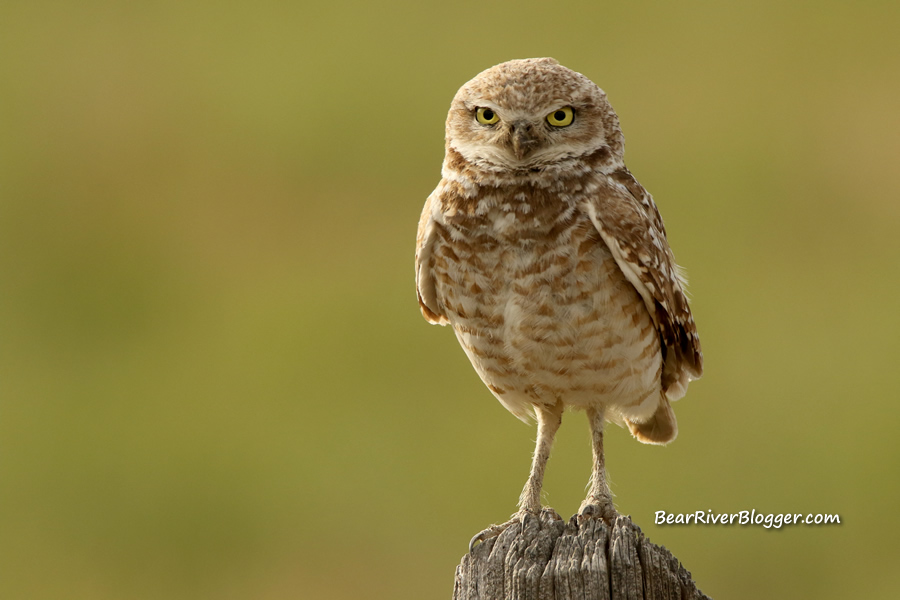
Burrowing Owls On Antelope Island
It is well known by many serious birders that Antelope Island is a regular location to find burrowing owls each summer. I, too, have found numerous burrowing owls on the large island, but it can be a daunting task if you don’t know where to start looking.
The island staff has placed numerous artificial breeding burrows all over the island to attract nesting pairs of burrowing owls, but, however, these exact locations aren’t readily given out to help protect the nesting sites from human disturbances.
I will say, however, start your search a bit south and west of the visitors center. This is a very commonplace to find burrowing owls and is, in fact, where I saw my first burrowing owl for this year.
Many of the burrows are relatively close to the roads so the owls are actually easily seen standing near a burrow if you are in the right area. If you see a car or two pulled to the side of the road, that is actually a good sign people are photographing a burrowing owl and a good place to investigate.
Salt Creek WMA
Located in Box Elder County is a state-owned waterfowl management area known as Salt Creek WMA. It is managed primarily for waterfowl, but the Utah DWR has been enhancing parts of this large tract of land for burrowing owls as well.
On the South end, near the entrance to the county landfill, is a public viewing area called Compton’s Knoll. It is open year-round and a great place to look for burrowing owls as they can often be seen standing on the wooden fences.
Out of the three places I frequent each summer in search of burrowing owls, this is the one I visit the least because for me, at least, it is the location I find the fewest burrowing owls. Other birders I know have much better luck at Compton’s Knoll at Salt Creek so maybe it’s just my bad luck.
Owls On Promontory Mountain
Without question, the place I frequent the most and is undoubtedly the best for finding burrowing owls is Promontory Mountain, namely in the area surrounding the Golden Spike National Historical Park.
The reason being for this is, not only do I find burrowing owls each and every summer I go, but I also find short-eared owls quite consistently in the same area as well.
It’s a large, remote area and hard to pinpoint each year where the owls will be but by starting at the national park and working the roads from there, I always find burrowing owls.
Burrowing owls are the most active during the early morning and late evening so the best time to look for burrowing owls is during dawn and dusk.
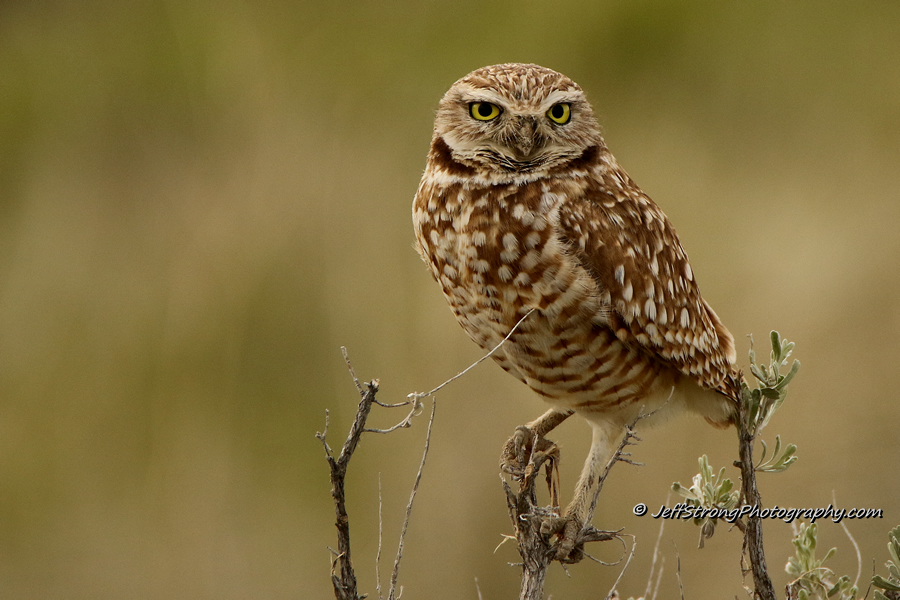
I have seen burrowing owls within a few hundred yards of the park’s visitors center and many miles away, so it is quite a needle in a haystack, but that is why I like the area so much. I love the challenge of finding burrowing owls as much as I love photographing them.
Even though the Bear River Migratory Bird Refuge hasn’t given me many opportunities to view burrowing owls, I still keep my eye out for them while traveling down Forest street on the way to the auto tour route. I have hope they will return someday.
When I mentioned to the refuge staff several years ago about my second sighting, it was learned that the location was near a spot where a previous burrow was found, so I am hoping someday that area will once again be a breeding ground for burrowing owls.
If you are looking for more information pertaining to the Bear River Migratory Bird Refuge or are planning a trip to visit the refuge I would suggest contacting the refuge visitors center.
If you like birds, feel free to subscribe to this blog to receive post notifications via email to keep up to date on my trips and experiences on the refuge and anywhere else my camera takes me.
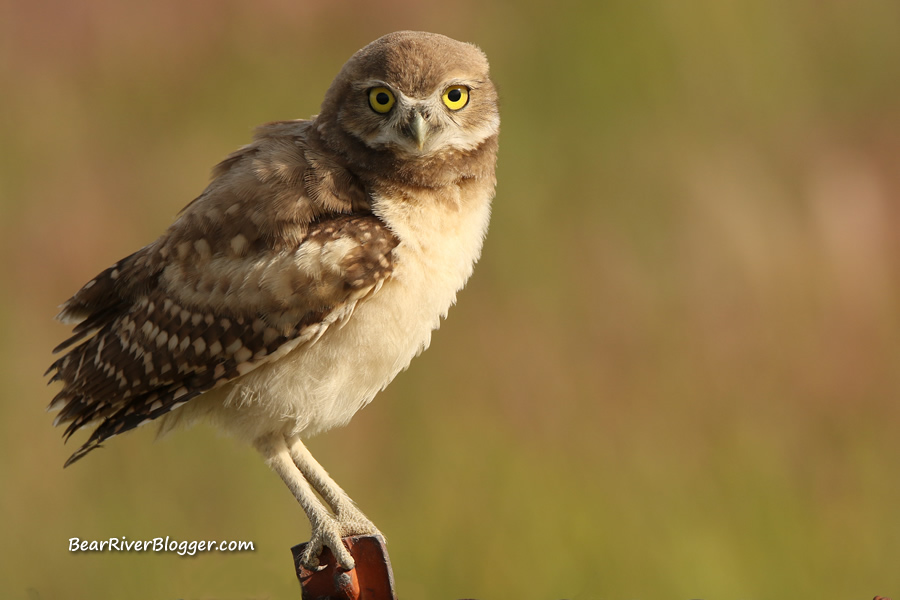
One last note, don’t be discouraged by my meager sightings of burrowing owls on the Bear River Migratory Bird refuge.
It is an incredible birding hotspot, and I have found there is always stuff to see and get interested in even when my intended subject is very hard to find, much like the burrowing owl currently is on the refuge.
The surrounding areas do have plenty of burrowing owls, so there are birds to be seen during the summertime in proximity to the refuge.
It just takes a little time, effort, and patience to find the areas the owls are frequenting, but that is the fun of bird watching, finding, and exploring new areas in search of birds.
